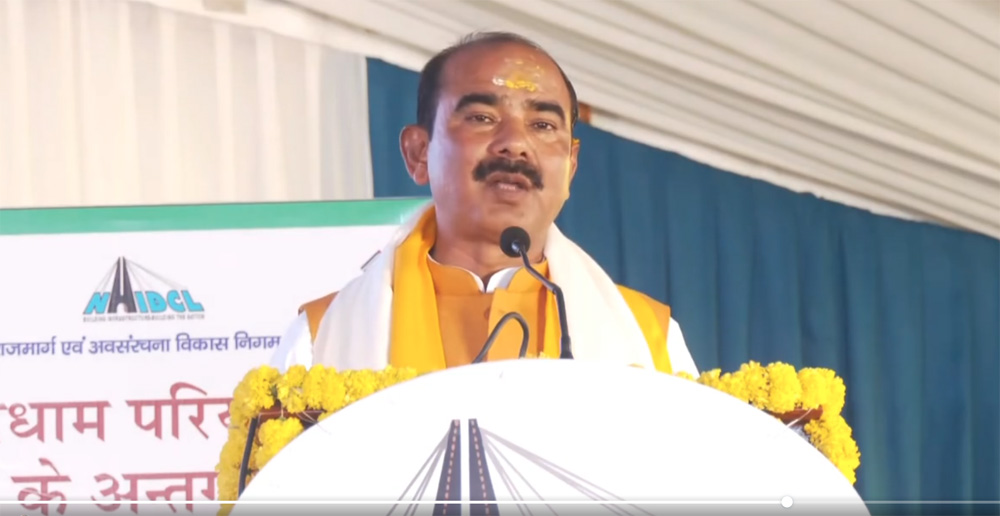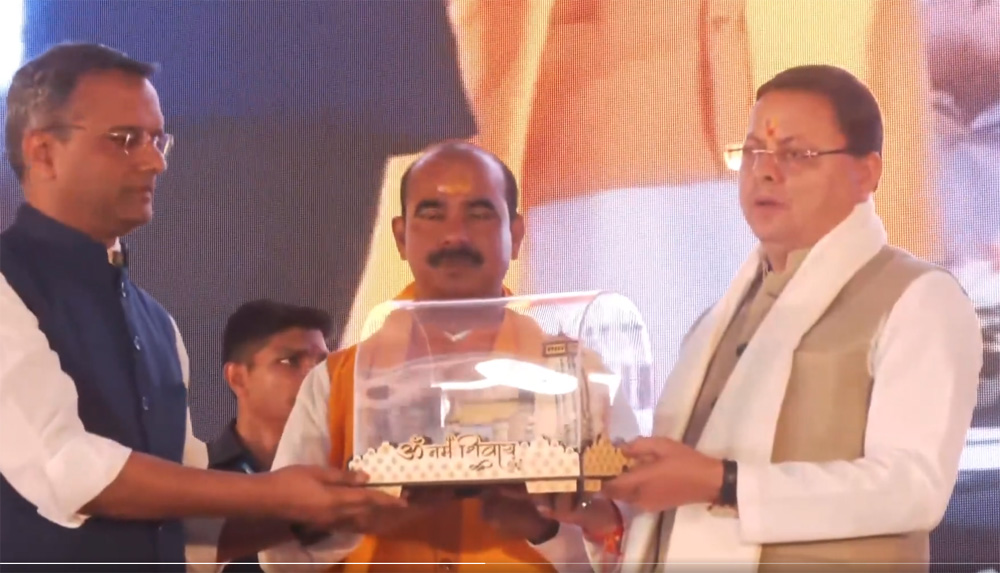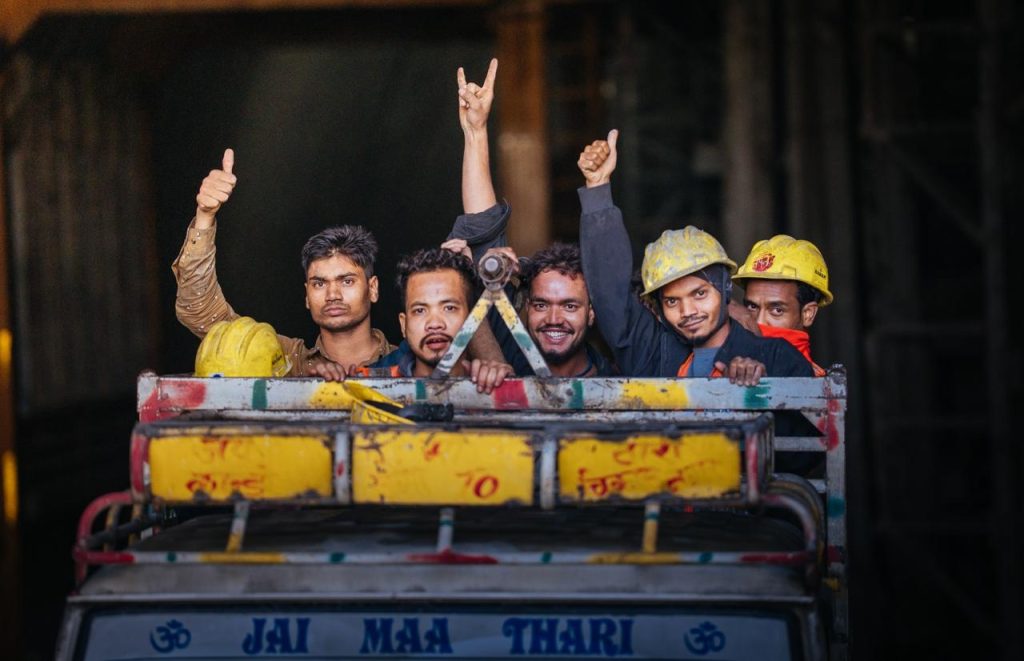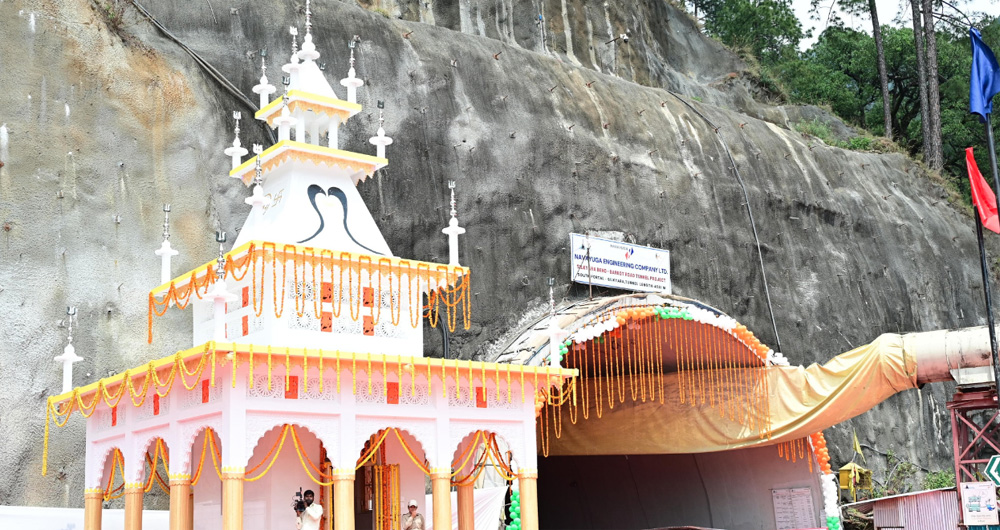Dehradun: The Silkyara-Barkot Tunnel, a crucial component of the Government of India’s ambitious Chardham Mahamarg Pariyojana aimed at providing all-weather road connectivity to the revered Char Dham pilgrimage sites in Uttarakhand, achieved a significant milestone.
After overcoming a major setback due to a tunnel collapse in November 2023, the implementing agency, National Highways & Infrastructure Development Corporation Limited (NHIDCL), has successfully restored the affected section, and the tunnel breakthrough occurred today, 16 April, 2025.
Uttarakhand Chief Minister Pushkar Singh Dhami, Union Minister of State, Ministry of Road Transport & Highways, Ajay Tamta, senior officials of NHIDCL graced the ceremony.

The Silkyara-Barkot Tunnel, with a total project cost of Rs. 853.79 Crore, is designed to connect the Gangotri and Yamunotri axes under the Radi pass. Upon completion, it will drastically reduce the snow-affected length of NH-134 by 25.6 km, cutting down travel time from the current 50 minutes to a mere 5 minutes – a tenfold reduction. Furthermore, the tunnel will contribute to the preservation of the rich flora and fauna of the Radi top mountains, particularly the dense Rhododendron (Buransh) vegetation.
Works on the ground commenced on 9 July , 2018. However, the project faced a severe challenge on 12 November, 2023, when a section of the tunnel, approximately 250 meters from the Silkyara side, collapsed. The incident trapped 41 workers inside, prompting a large-scale rescue operation. Investigations attributed the collapse to a combination of geological and structural factors, including unforeseen loose patches of fractured/weak rock, water seepage, and issues that remained undetected during the initial construction phase.

The ensuing 16-day rescue operation was a testament to inter-agency coordination and resilience. Multiple government bodies, including the National Disaster Response Force (NDRF), State Disaster Response Force (SDRF), Uttarakhand Police, Indian Army Corps of Engineers, and Border Roads Organization, collaborated with private resources and international experts. The rescue efforts were hampered by obstructions, water-logging, and machinery failures, necessitating the deployment of innovative techniques such as horizontal drilling, vertical drilling, micro-tunneling, and the crucial manual excavation carried out by “rat hole” miners.
Following the successful rescue of all 41 workers, NHIDCL prioritized the restoration of the collapsed tunnel section to ensure the safe continuation of the project. This involved a combination of advanced engineering solutions and comprehensive water management. A meticulous study of the collapsed area led to the adoption of a drift excavation method with microfine cement stabilization.

Notably, a few of the 41 rescued workers, including Sabha Ahmed, Sonu Kumar Sah, Birendra Kishku, Biswajit Kumar Varma, Akhilesh Kumar, Manik Talukdar, Sovik Pakira, Jayadev Parmanik, and Gabbar Singh Negi, are still contributing to the project, demonstrating their resilience and commitment.
The excavation was systematically carried out in three drifts (left, right, and central) using precision equipment to maintain structural integrity. Existing support elements were carefully removed using oxyacetylene cutting after the ground was stabilized and new support in the form of steel arches and sprayed concrete was installed.
The confined space necessitated the use of smaller machinery, which, while ensuring greater safety, contributed to a slower pace of operations. Buried machinery within the collapsed material was also carefully removed after thorough risk assessments.
A significant challenge encountered during the restoration was the accumulation of approximately 70 Million Liters of seepage water. This was effectively addressed through dewatering operations using MS pipes and strategically established pump stations, with the entire accumulated water being removed by October 2024. The heading excavation required enhanced support systems, including temporary inverts and additional bolting, due to the presence of critical geological zones. To expedite the breakthrough, simultaneous activities were avoided to maintain focus on the critical path.

During the resumption of works, NHIDCL also implemented additional oversight measures. Konkan Railways Corporation Limited (KRCL) was engaged to conduct a technical assessment of the site, and a dedicated Tunnel Expert Group was formed within NHIDCL to provide specialized assistance across various aspects of tunnel construction. Project monitoring was significantly enhanced, with daily progress reports being reviewed at the highest levels of the government, alongside periodic project review meetings.
Today, April 16, 2025, marks a significant step forward for the Silkyara-Barkot Tunnel project, with the breakthrough of the tunnel achieved. The successful restoration of the collapsed section is a testament to the dedication and expertise of all involved.
While the breakthrough achieved, NHIDCL is also focusing on resolving contractual issues related to the project in a time-bound manner to ensure healthy cash flow and the smooth continuation of remaining works. The agency is actively working with the Authority Engineer, TPF Getinsa Euroestudios S.L. in association with Rodic Consultants Pvt.Ltd and the Contractor, Navayuga Engineering Company Limited to finalize a way forward on key issues.

The breakthrough of the Silkyara-Barkot Tunnel represents a major milestone in the Chardham Mahamarg Pariyojana, bringing closer the realization of seamless all-weather connectivity to the vital Char Dham pilgrimage sites and promising significant benefits for pilgrims and the environment alike, thanks to the overdrive of Team NHIDCL.


